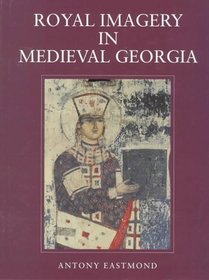Search -
Royal Imagery in Medieval Georgia
Royal Imagery in Medieval Georgia
Author:
An unprecedented conceptual look at the influences of gender and patronage on the political art of medieval Georgia. Medieval Georgia, in the Caucasus, produced a wealth of monuments to its rulers, of which little is known outside the former Soviet Union. This book is the first of its kind to examine the development of royal imagery in Georgia ... more »
Author:
An unprecedented conceptual look at the influences of gender and patronage on the political art of medieval Georgia. Medieval Georgia, in the Caucasus, produced a wealth of monuments to its rulers, of which little is known outside the former Soviet Union. This book is the first of its kind to examine the development of royal imagery in Georgia ... more »
ISBN-13: 9780271016283
ISBN-10: 0271016280
Publication Date: 1/1998
Pages: 268
Rating: ?
ISBN-10: 0271016280
Publication Date: 1/1998
Pages: 268
Rating: ?
0 stars, based on 0 rating
Publisher: Pennsylvania State University Press
Book Type: Hardcover
Members Wishing: 0
Reviews: Amazon | Write a Review
Book Type: Hardcover
Members Wishing: 0
Reviews: Amazon | Write a Review
Genres:
- Arts & Photography >> History & Criticism >> General
- Arts & Photography >> History & Criticism >> Schools, Periods & Styles >> Medieval
- History >> Asia >> Georgia
- History >> Russia




